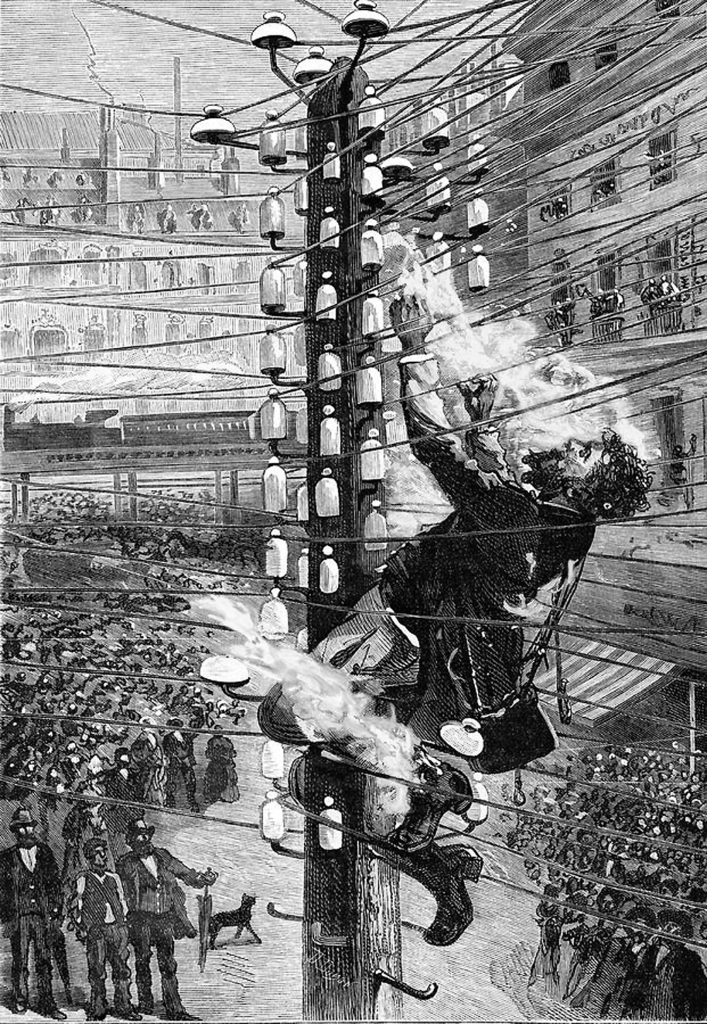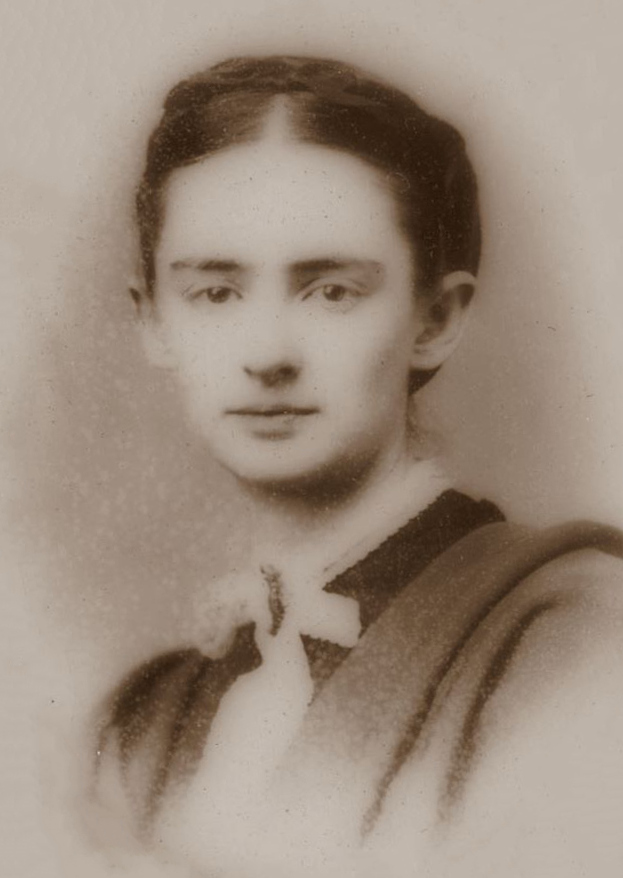
My list of the top 5 overlooked and/or largely forgotten historical fiction novels is up now on Shepherd, the book recommendation site. If you want to know what’s on my list, follow this link!

My list of the top 5 overlooked and/or largely forgotten historical fiction novels is up now on Shepherd, the book recommendation site. If you want to know what’s on my list, follow this link!

Edison had invented the light bulb, but he needed to devise a system to distribute electricity to houses and businesses so that they could use his light bulbs. The system he developed used DC (direct current), a low voltage, high current system. George Westinghouse, using ideas developed by Nikola Tesla, came up with a competing system that used AC (alternating current), which used high voltages and low currents.
The battle was on. Tesla had first worked for Edison, but Edison had dismissed his ideas as impractical. However, it soon became clear that the AC system was superior, particularly over longer distances, allowing electricity to be run to remote and rural districts. To fight back, Edison started a campaign highlighting the safety implications of a high-voltage system, going so far as to demonstrate its dangers by inviting journalists to watch when he got a stray dog to stand on a sheet of tin attached to an AC generator. The switch was flipped and the dog yelped and died.
Further support for Edison’s view that AC was a lethal technology was provided when it was used in the first execution of a prisoner by the electric chair. On 6 August 1890, William Kemmler, who had been convicted of murdering his common-law wife, was strapped to a chair and electrocuted. But the first shock did not kill him; it required a second, higher voltage burst to finish Kemmler off, although this set his hair and coat on fire.
Despite Edison’s attempts to tie AC to Kemmler’s execution and brand it dangerous, the system’s superiority prevailed, and in one of Edison’s few failures, the world today runs on AC.

On 4 October 1957, the Soviet Union stunned the world, and in particular the United States, by launching Sputnik 1 into orbit. On 12 April 1961, the Soviet Union sent Yuri Gagarin into space and brought him safely back to earth. The space race had begun and the Soviet Union had a clear lead. In a time when the world was locked into a confrontation between the communist Soviet bloc and the West, the propaganda advantage in leading the race into space was immense.
In response, on 25 May 1961 President John F. Kennedy asked Congress to commit the nation to, “before this decade is out, […] landing a man on the Moon and returning him safely to the Earth”. Following Kennedy’s assassination, this pledge became sacrosanct. To catch up with the Soviet lead, the Americans planned a series of manned spacecraft, beginning with the Mercury rockets crewed by a single astronaut, going on to the two-man Gemini missions that pioneered many of the technologies and techniques necessary for a flight to the Moon, and culminating with the three-man Apollo programme designed to take men to the Moon. Despite the Apollo 1 disaster, when three astronauts were killed in the Command Module during testing on the launch pad when a fire broke out, by the late 1960s the American space programme had overtaken the Soviets. Now all that remained was to fulfil Kennedy’s pledge.

Sailing back from Europe aboard the good ship Quaker City, a fellow traveller showed Samuel Clemens (the real name of Mark Twain) a photograph of his sister, Olivia. Of course, Twain later said it was love at first sight – it wouldn’t be nearly so good a story otherwise – but nevertheless he accepted an invitation to visit the home of his shipboard companion and there met, in the flesh, Olivia Langdon, the daughter of a wealthy merchant family which was also ardently abolitionist: her father was a conductor on the Underground Railroad, the network of routes and safe houses that helped slaves escape to freedom. Clemens soon fell in love with her, but Olivia turned down his proposal. A devout Christian, she would reform the hard-drinking, hard gambling son of the Mississippi, and agreed to their corresponding. Clemens agreed, thinking that by doing so “she would unwittingly dig a matrimonial pit and end by tumbling into it”.
Olivia’s parents were hardly reassured when they sought the opinions of Clemens’ friends. He was, they reported, an unsettled rover “who got drunk oftener than was necessary”. But then, that was what Clemens had already told them. At least he was honest in his self reporting.
It was this honesty that won over Olivia’s parents, and the object of Clemens’ love herself fell into the pit of correspondence between them (over 180 letters). Samuel Clemens and Olivia Langdon were engaged in February 1869 and married the following year. Livy became his editor and first reader; a vital influence in his work. After Livy died, in 1904, Clemens wrote a story of the first human couple, Adam and Eve. In the story, when Eve dies, Adam says, “Wheresoever she was, there was Eden.” They were words for his wife too.
This was said to me yesterday.
“I knew I recognised your name. I’ve got your book in my toilet.”
I can now die content!
The lovely people at NF Reads interviewed me a little while back. Here are the results: https://www.nfreads.com/interview-with-author-edoardo-albert/
Best bit? Being completely stumped by the ‘what role do emotions play in creativity’ question.
It’s quite something to see the book that you’ve worked on for so long rolling off the presses – but that is what I did last Thursday. I went with Granta’s publishing director, Bella Lacey, to CPI Books in Kent to visit their plant and to watch the printing of all the 5,000 hardbacks that were to be printed for the first print run of Warrior: A Life of War in Anglo-Saxon Britain.
Having heard for so many years about the death of manufacturing industry in Britain, it was great to see a factory, employing 150 people, that has gone from strength to strength. Indeed, talking to Mark, the sales director, who took us round the plant, we learned that they have had to employ more people to cope with the demand. Because of their ability to print anywhere from one to a million books, the very quick turnaround they provide from receiving the files to printing the books, and the much lower transportation costs, CPI has turned back the tide of jobs flowing to China. The presses are rolling 24 hours a day, six days a week, with the company producing between two and three million books a week!
We were taken through the whole print cycle, from the production of the print type for 32 pages of the book (which is why books are produced in multiples and factors of 32), through to printing, folding, cutting, binding and covering the books. For the last stage, we got to see Warrior itself go from a shrink wrapped pile of bound pages to the fully jacketed finished product, ready to go off to the booksellers. It was a fascinating and enlightening day: my thanks to Granta and CPI Books for making it possible. Here are some photos of the process.

















Photo by Maurício Mascaro from Pexels
As a teenager in the late ’70s and early ’80s I remember attending quite a few house parties, with varying amounts of parental supervision. But, so far as I can see, teenagers today don’t hold house parties. Is it because their parents, having attended house parties themselves when they were younger, are saying, “Absolutely not!” Knowing what went on at some of those parties (and the state of the house afterwards), that’s certainly what I would say if any of my sons intimated they wanted to have a house party. So, are house parties a thing of the past or are they still going on?
 For all you Warhammer 40k fans out there, I’m delighted to announce my first novella set in the grim dark of the far future (it’s actually moved on to the 41st millennium now). Lords of the Storm tells of a Reiver squad of the Fulminators Space Marines given the mission to retrieve the relics of an Imperial saint from a penitential shrine world overrun by the forces of Chaos following the Great Rift. I’m very pleased with how the story has turned out and I hope you will be too. The novella should be available for pre-order in the summer. There’s a bit more about Lords of the Storm, and lots more about other forthcoming titles from the Black Library, here.
For all you Warhammer 40k fans out there, I’m delighted to announce my first novella set in the grim dark of the far future (it’s actually moved on to the 41st millennium now). Lords of the Storm tells of a Reiver squad of the Fulminators Space Marines given the mission to retrieve the relics of an Imperial saint from a penitential shrine world overrun by the forces of Chaos following the Great Rift. I’m very pleased with how the story has turned out and I hope you will be too. The novella should be available for pre-order in the summer. There’s a bit more about Lords of the Storm, and lots more about other forthcoming titles from the Black Library, here.